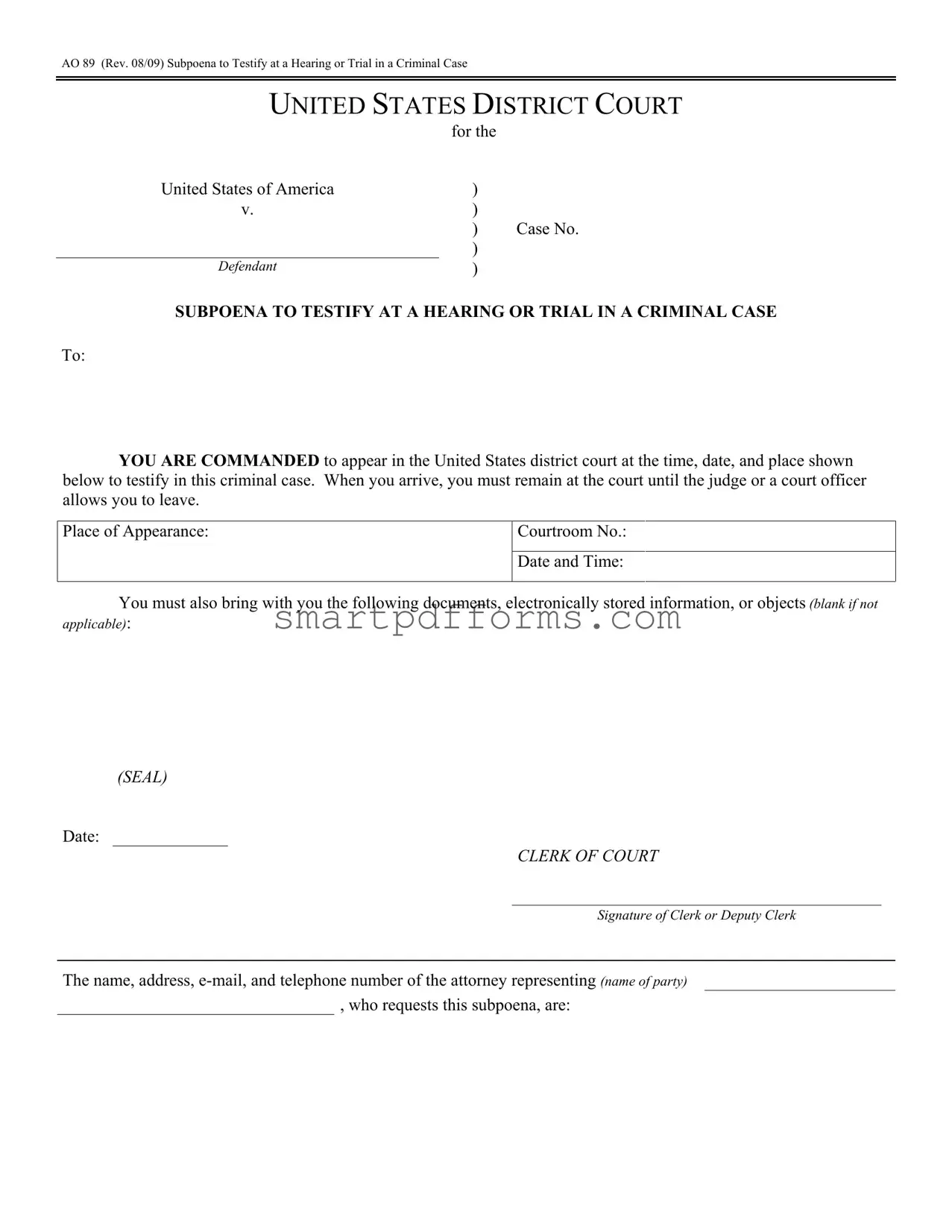AO 89 (Rev. 08/09) Subpoena to Testify at a Hearing or Trial in a Criminal Case
UNITED STATES DISTRICT COURT
|
|
for the |
|
|
__________ District of __________ |
United States of America |
) |
|
v. |
) |
|
|
) |
Case No. |
|
|
) |
|
Defendant |
) |
|
SUBPOENA TO TESTIFY AT A HEARING OR TRIAL IN A CRIMINAL CASE
To:
YOU ARE COMMANDED to appear in the United States district court at the time, date, and place shown below to testify in this criminal case. When you arrive, you must remain at the court until the judge or a court officer allows you to leave.
Courtroom No.:
Date and Time:
You must also bring with you the following documents, electronically stored information, or objects (blank if not applicable):
(SEAL)
Date:
CLERK OF COURT
Signature of Clerk or Deputy Clerk
The name, address, e-mail, and telephone number of the attorney representing (name of party) , who requests this subpoena, are:
AO 89 (Rev. 08/09) Subpoena to Testify at a Hearing or Trial in a Criminal Case (Page 2)
Case No.
PROOF OF SERVICE
This subpoena for (name of individual and title, if any)
was received by me on (date) |
. |
|
|
|
’I served the subpoena by delivering a copy to the named person as follows:
’I returned the subpoena unexecuted because:
.
Unless the subpoena was issued on behalf of the United States, or one of its officers or agents, I have also tendered to the witness fees for one day’s attendance, and the mileage allowed by law, in the amount of
$.
My fees are $ |
|
for travel and $ |
|
for services, for a total of $ |
. |
|
|
|
|
|
|
|
I declare under penalty of perjury that this information is true.
Date:
Server’s signature
Printed name and title
Server’s address
Additional information regarding attempted service, etc:


